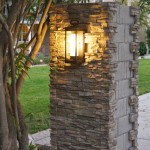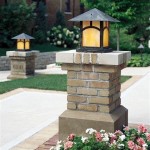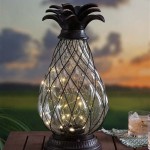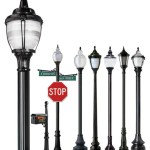```html
Solar Ground Spot Lights Outdoor: Illuminating Landscapes Sustainably
Solar ground spot lights offer a versatile and sustainable solution for illuminating outdoor spaces. These lights, powered by solar energy, provide an efficient and environmentally friendly alternative to traditional wired lighting systems. Their ease of installation, combined with their low maintenance requirements, makes them a popular choice for homeowners and landscape professionals alike.
The primary function of solar ground spot lights is to highlight specific features within a landscape. This can include architectural details, trees, shrubs, pathways, or water features. By strategically placing these lights, individuals can create visually appealing nighttime environments that enhance the aesthetic appeal of their property.
The design of a solar ground spot light typically involves a solar panel, a rechargeable battery, an LED light source, and a housing designed to withstand outdoor elements. The solar panel converts sunlight into electricity, which is then stored in the battery. At dusk, a light sensor automatically activates the LED, providing illumination until the battery is depleted or dawn arrives.
Understanding the Components of Solar Ground Spot Lights
A comprehensive understanding of the key components of solar ground spot lights is crucial for making informed purchasing decisions and ensuring optimal performance. Each component plays a vital role in the overall functionality and longevity of the lighting system.
The solar panel is arguably the most critical component. It is responsible for capturing sunlight and converting it into electrical energy. Solar panels are typically made of silicon-based photovoltaic cells. The efficiency of the solar panel directly impacts the amount of energy that can be harvested and stored, ultimately influencing the brightness and duration of the light. Panels are graded by their energy collection efficiency; higher efficiency panels typically cost more but provide more light.
The rechargeable battery serves as the energy storage unit. It accumulates the electricity generated by the solar panel during the day and releases it to power the LED light at night. Common battery types used in solar ground spot lights include nickel-metal hydride (NiMH) and lithium-ion (Li-ion) batteries. Li-ion batteries generally offer higher energy density and a longer lifespan compared to NiMH batteries. The battery’s capacity, measured in milliampere-hours (mAh), determines how long the light can operate on a full charge. Choosing a battery with sufficient capacity is essential for ensuring adequate illumination throughout the night.
The LED light source provides the actual illumination. LEDs are highly energy-efficient and have a long lifespan, making them ideal for solar-powered applications. The brightness of the LED is measured in lumens. A higher lumen rating indicates a brighter light. The color temperature of the LED, measured in Kelvin (K), affects the appearance of the light. Warm white light (around 2700K-3000K) creates a cozy and inviting atmosphere, while cool white light (around 4000K-5000K) provides brighter, more focused illumination. Color rendering index (CRI) is also important as it will determine how naturally objects will look under the lights.
The housing protects the internal components from the elements. It is typically made of durable materials such as stainless steel, aluminum, or high-impact plastic. The housing should be weather-resistant and able to withstand exposure to rain, snow, and extreme temperatures. A well-designed housing will also help to dissipate heat generated by the LED and battery, prolonging their lifespan.
Factors to Consider When Choosing Solar Ground Spot Lights
Selecting the right solar ground spot lights requires careful consideration of various factors to ensure optimal performance and satisfaction. The following factors should be evaluated before making a purchase.
Brightness and Light Output: The desired brightness of the light will depend on the specific application. For highlighting architectural details or illuminating pathways, a brighter light with a higher lumen rating may be necessary. For creating a subtle ambiance, a dimmer light with a lower lumen rating may be more appropriate. It is important to consider the area being illuminated and the desired effect when determining the appropriate brightness.
Battery Capacity and Run Time: The battery capacity directly affects how long the light can operate on a full charge. The ideal battery capacity will depend on the availability of sunlight in the area and the desired run time. In regions with limited sunlight, a larger battery capacity may be necessary to ensure adequate illumination throughout the night. Also, colder temperatures can impact battery life, so it's important to consider the local climate. Real-world run times may vary from manufacturer claims, so reading reviews from other users is helpful.
Weather Resistance and Durability: Solar ground spot lights are exposed to various weather conditions, so it is essential to choose lights that are weather-resistant and durable. Look for lights with a high IP (Ingress Protection) rating. An IP rating indicates the level of protection against dust and water. For example, an IP65 rating indicates that the light is protected against dust and water jets. The materials used in the construction of the light should also be considered. Stainless steel and aluminum are generally more durable than plastic.
Adjustability and Features: Some solar ground spot lights offer adjustable heads, allowing users to direct the light where it is needed most. Other features may include adjustable brightness settings, color-changing capabilities, and motion sensors. Consider which features are most important for the specific application and choose lights accordingly. Some higher-end models may also feature smart controls via a mobile app.
Warranty and Customer Support: A reputable manufacturer will offer a warranty on their products. The warranty provides protection against defects in materials and workmanship. Before making a purchase, review the warranty terms and conditions. Also, research the manufacturer's customer support services. A responsive and helpful customer support team can be invaluable if any issues arise.
Installation and Maintenance of Solar Ground Spot Lights
The installation of solar ground spot lights is typically straightforward and requires minimal tools. Proper installation is essential for optimal performance and longevity. Similarly, regular maintenance will help to ensure that the lights continue to function efficiently.
Placement and Sunlight Exposure: The placement of solar ground spot lights is crucial for maximizing sunlight exposure. The solar panel should be positioned in an area that receives direct sunlight for at least six to eight hours per day. Avoid placing the lights in shaded areas or under trees. The angle of the solar panel can also be adjusted to optimize sunlight capture. In the northern hemisphere, tilting the panel southwards can increase efficiency.
Installation Process: Most solar ground spot lights come with stakes or mounting brackets for easy installation. Simply insert the stake into the ground or attach the mounting bracket to a solid surface. Ensure that the lights are securely fastened to prevent them from being knocked over or damaged by wind. When burying wires (if applicable), follow local building codes.
Cleaning and Maintenance: Regular cleaning of the solar panel is essential for maintaining its efficiency. Dust, dirt, and debris can accumulate on the panel, reducing its ability to capture sunlight. Clean the panel with a soft cloth and mild detergent. Avoid using abrasive cleaners or harsh chemicals. Periodically check the battery terminals for corrosion and clean them if necessary. Replace the batteries as needed, following the manufacturer's recommendations. If the lights are exposed to snow or ice, remove the snow or ice from the solar panel to allow sunlight to reach it.
Troubleshooting Common Issues: If the lights are not working properly, there are several troubleshooting steps to take. First, ensure that the solar panel is clean and receiving adequate sunlight. Check the battery to see if it needs to be replaced. Inspect the wiring for any damage or loose connections. If the lights still do not work, consult the manufacturer's instructions or contact customer support for assistance.
By carefully considering these factors and following proper installation and maintenance procedures, individuals can effectively utilize solar ground spot lights to enhance the beauty and functionality of their outdoor spaces while minimizing their environmental impact. The cost-effectiveness and sustainability of these lights make them a compelling choice for anyone seeking to illuminate their landscape responsibly.
```
Tutunaumb Holiday Deals Spot Promotion Solar Ground Light 16 Led Lights 8 Main Side Upgraded Outdoor Powered Waterproof For Walkway Yard Patio Yellow Com

Cubilan Solar Spot Lights Outdoor Garden Changing And Fixed Color 4 Pack B07wgm44rg The Home Depot

Eeekit 10 In 1 Solar Ground Light String Led Disk Lights Outdoor Waterproof Garden Spot Lighting For Landscape Lawn Patio Yard Pathway Cool White Com

Innogear Solar Outdoor Lights Waterproof S

Cubilan Solar Spot Lights Outdoor 52 Led 3 Modes Cool White 6 Pack B09jfw2zxc The Home Depot

Tutunaumb Holiday Deals Spot Promotion Solar Ground Light 16 Led Lights 8 Main Side Upgraded Outdoor Powered Waterproof For Walkway Yard Patio Yellow Com

Solar Spot Lights Outdoor Adjustable Auto On Off Flag Pole Temu

Cubilan Solar Spot Lights Outdoor Spotlight Warm White 2 Pack B07dj6bg3t The Home Depot

Solar Colorful Rotating Led Projector Lights Outdoor Garden Lawn Lamp Spot Light

Topchances 2 In 1 Solar Wall Lights Ground Outdoor Spotlight Motion Sensor Security Light Auto On Off Landscape For Patio Yard Garden 6500k Cool White Com







